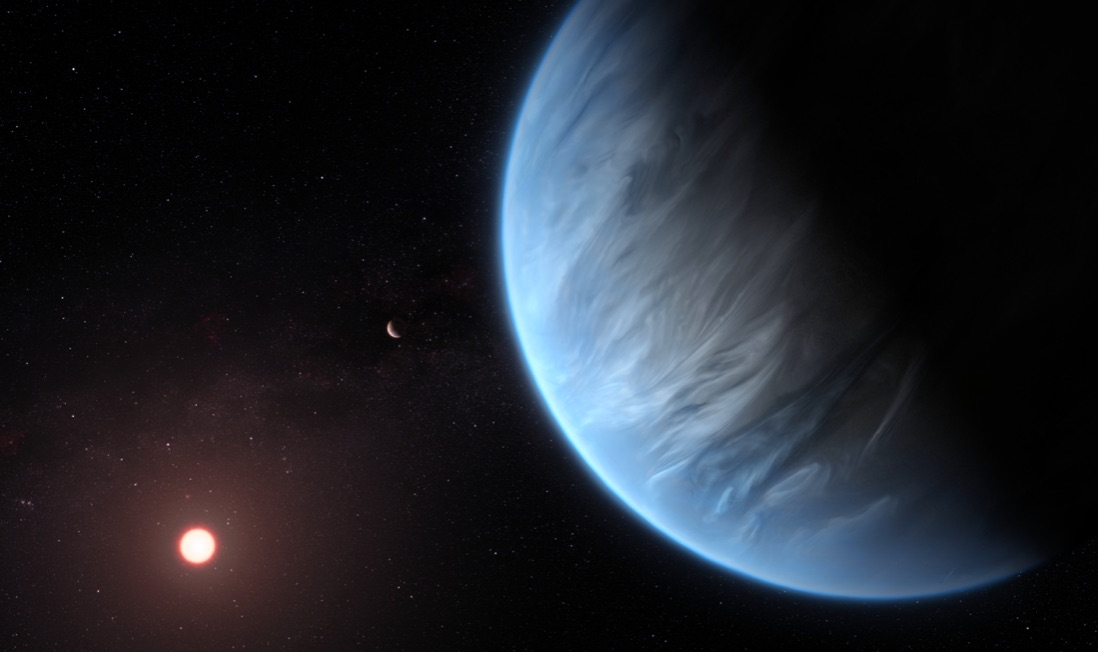
NASA’s Hubble Space Telescope has discovered water vapor in the atmosphere of a distant Earth-like exoplanet known as K2-18b.
The planet is located about 110 light-years away in the Leo constellation, according to a press release from NASA about the exoplanet. NASA says K2-18b resides in a “habitable zone,” which is “the region around a star in which liquid water could potentially pool on the surface of a rocky planet.”
The readings from the Hubble Space Telescope also suggest that hydrogen and helium could be present in the atmosphere of the exoplanet.
While the exoplanet is greater in size and has more gravity and radiation than Earth, NASA said it’s the only exoplanet they have found so far to have water in its atmosphere as well as temperatures that could support life and sustain liquid water on a rocky surface. Basically, the planet might be habitable.
K2-18b was first discovered in 2015 and is one of the hundreds of what NASA calls “Super-Earths.” NASA said that its planet-hunting satellite, known as TESS (Transiting Exoplanet Survey Satellite), is expected to find hundreds more of these Super-Earths in the next few years.
TESS found its first exoplanet back in March with the discovery of the planet TOI 197.01. The planet is about the size of Saturn but is located much closer to its star than we are to the Sun, meaning it has very high surface temperatures.
Other important exoplanet discoveries include DS Tuc Ab, which was identified by TESS in July. Astronauts are currently studying the exoplanet to understand more about how planets grow and develop. There’s also a big focus on habitability — which planets could (theoretically) support human life.
Overall, TESS has been able to discover more than 20 different planets during its first year of observations, including a number of planets that are unlike the ones found here in our solar system.
NASA has confirmed the existence of more than 4,000 planets outside our solar system. The sheer number of that is impressive, but even more so if you take into consideration that before 1992, we couldn’t find any exoplanets.
Digital Trends reached out to NASA for further information on K2-18b and its significance in space research, and will update this story if we hear back.



